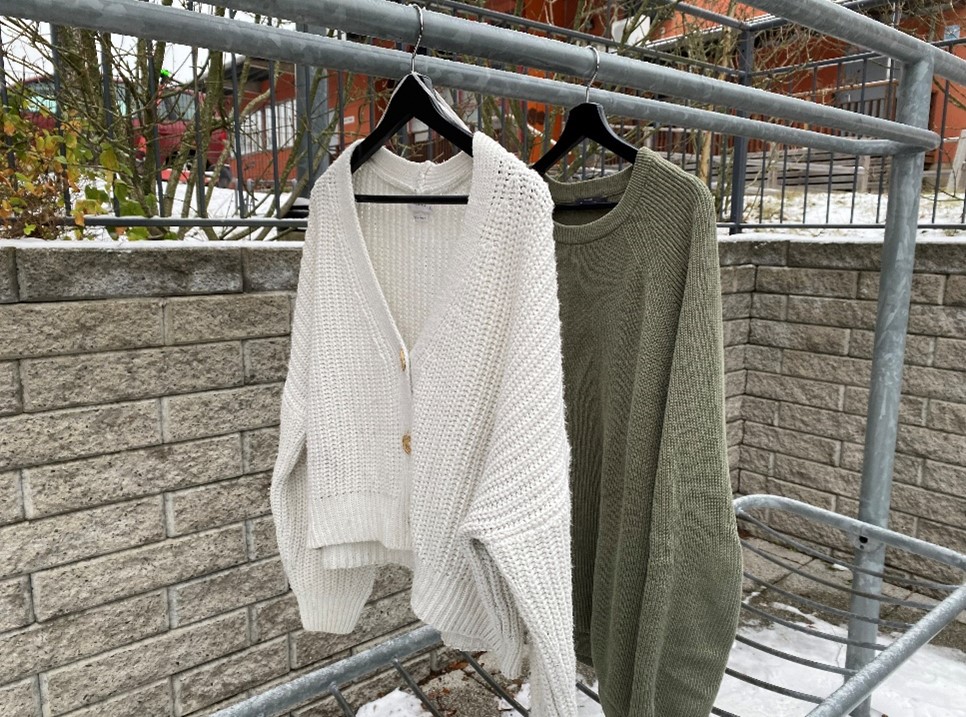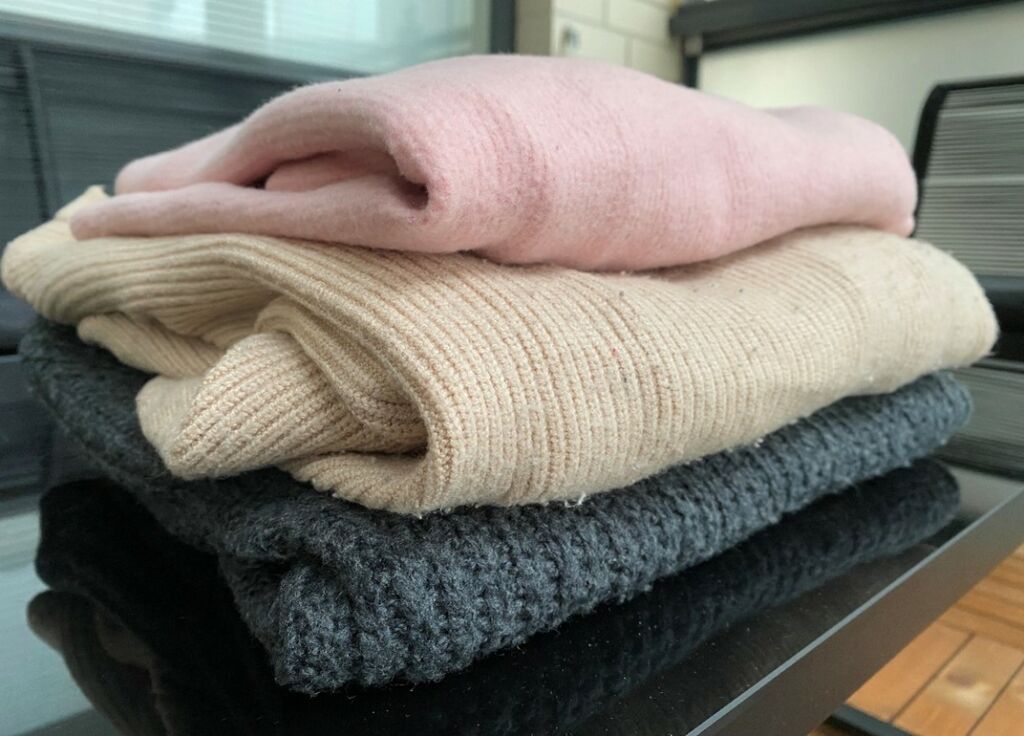Anti-consumption – what is it and how is it going to change consumption?

The current fashion industry is one of the most unsustainable industries. The biggest problem in the industry is disposable clothing. About 11,3 kilograms of new clothes per person are consumed annually in Finland. Textile waste is generated annually about 1,7 kilograms per person. Clothes are possibly worn only once, after which they are thrown away. At the same time, new clothing is being bought and consumed all the time. Instead of buying new and disposing the old, money and time should be invested in the use of existing clothes by extending their life. Anti-consumption of clothing is one answer for that.
Anti-consumption means consciously not consuming or reducing consumption. Anti-consumption of clothing is aimed at improving and extending the life of the existing clothes, so that there is no need to buy new clothes, or dispose of the old clothes until it is necessary. This helps to reduce the production volume of clothes. One way to extend the lifecycle of clothes is to properly care and maintain them.

Anti-consumption of clothing can be boycotting a specific company, activism, or restraining from consumption. Motivational sources of anti-consumption can come from own accord or externally for example regulation. The motivational sources can be a personal experience towards the brand, their conflict with own identity or moral ideology, desire to live a simpler life, environmental protection, or other ethical reasons. Anti-consumption of clothing isn’t necessarily related to sustainable development. It can also be spurred by a desire to save money.
Through anti-consumption of clothing, it is possible to reduce the amount of waste because clothes are in circulation as long as possible. Therefore less waste is generated. Anti-consumption of clothing can also be the answer for unsustainable buying behavior and production volume since buying clothes decreases. It can also help one to find and build their own identity, as it is one way to express oneself. Anti-consumption of clothing helps getting to know one’s clothes whereby their style becomes clearer.
Anti-consumption is a conscious choice, and it shouldn’t be connected to sustainable development too much. Because of this, those who are interested in anti-consumption of clothing should note that for example recycling and second hand don’t always measure up the goals of anti-consumption. It depends on the consumer’s motive for the action, whether the action can be counted as anti-consumption. The consumer may ask themselves, why do they put their clothes to circulation?
Of course, every consumer gets into a situation where there is a need to give up or get new clothes. Selling at flea market, donating to clothing collection or giving forward as a gift, are good ways to dispose usable textiles from one’s wardrobe without clothes ending up directly as waste. However, the motivating factor must be to reduce own consumption. Unnecessary clothes are given away and there are no plans to buy new ones, otherwise the activity cannot be considered to support anti-consumption of clothing. Putting clothes into circulation increases the number of clothes in the consumption loop of individual person, but the amount of circulation of used materials doesn’t increase and that supports anti-consumption of clothing.

Making clothes yourself is also part of the anti-consumption of clothing. However, the materials used, must be recycled so that the activity can be counted as anti-consumption. New fabric bought from the store is similar to buying a new piece of clothing. In that case, the number of materials in circulation increases ant it doesn’t actually equal to the goals of anti-consumption of clothing. However, self-made clothes can be long-lasting and so help forward anti-consumption of clothing. Self-made clothes are designed and made according to one’s own preferences. This means that the lifespan of these clothes is more likely to be longer than that of a new piece of clothing.
Consumers have great responsibility in consuming clothes. They decide when and what do they buy, how do they use clothes and when and how they dispose them. Through anti-consumption of clothing, consumption changes and purchases of new clothes decreases. Instead, the aim is to extend the lifespan of clothes. As a result of that, various repair and maintenance services get more highlighted. Instead of buying new clothes, we should be moving on to exchanging and borrowing clothes with friends and family or anyone. This enables wearing new clothes but doesn’t consume nature since the circulation rotates the clothes that already exist. So anti-consumption of clothing is also suitable for people who easily get bored with clothes or change style often.
When considering whether to switch to anti-consumption of clothing, it is good to remember that all actions and choices reform the economy. By switching to anti-consumption of clothing, it is possible to influence and change the direction of the fashion industry becoming more sustainable.
Nelli Kontturi & Jenni Luotonen
Students in Turku UAS
Sources:
Vesterinen, E. Syrjälä, H. 2022. Sustainable anti-consumption of clothing: A systematic literature review. Cleaner and Responsible Consumption, vol 5. Accessed on 25.11.2022. Retrieved from https://www.sciencedirect.com/science/article/pii/S2666784322000158?via%3Dihub
Mäkilä, K. 2020. Antikuluttamisella vastuullista muotia [Responsible fashion with anti-consumption]. Master’s thesis. University of Vaasa. Accessed on 25.11.2022. Retrieved from https://osuva.uwasa.fi/bitstream/handle/10024/11040/UniVaasa_2020_Kiira_Makila.pdf?sequence=2&isAllowed=y
Janttonen K. 2022. Vaatteiden antikuluttamisen motivaatiotekijät [Motivational Factors for Anti-Consumption of Clothes]. Thesis. Metropolia University of Applied Sciences. Accessed on 25.11.2022. Retrieved from https://www.theseus.fi/bitstream/handle/10024/751082/Janttonen_Kaisa.pdf?sequence=2
Eetti ry. 2022. Maijan yritysvastuukoulu 15. jakso (Vaatteiden antikuluttaminen – feat. Essi Vesterinen) [Maija’s corporate responsibility school 15th episode (Anti-consumption of clothes – feat. Essi Vesterinen]. Podcast. Accessed on 25.11.2022. Retrieved from https://suomalaiset-podcastit.fi/podcast/eettisen-kaupan-puolesta-ry/maijan-yritysvastuukoulu-15-jakso-vaatteiden-antik
Dahlbo, H. Rautiainen, A. Savolainen, H. Oksanen, P., Nurmi, P. Virta, M. 2021. Textile flows in Finland 2019. Reports from Turku University of Applied Sciences 276. Accessed on 29.11.2022. Retrieved from https://julkaisut.turkuamk.fi/isbn9789522167873.pdf
